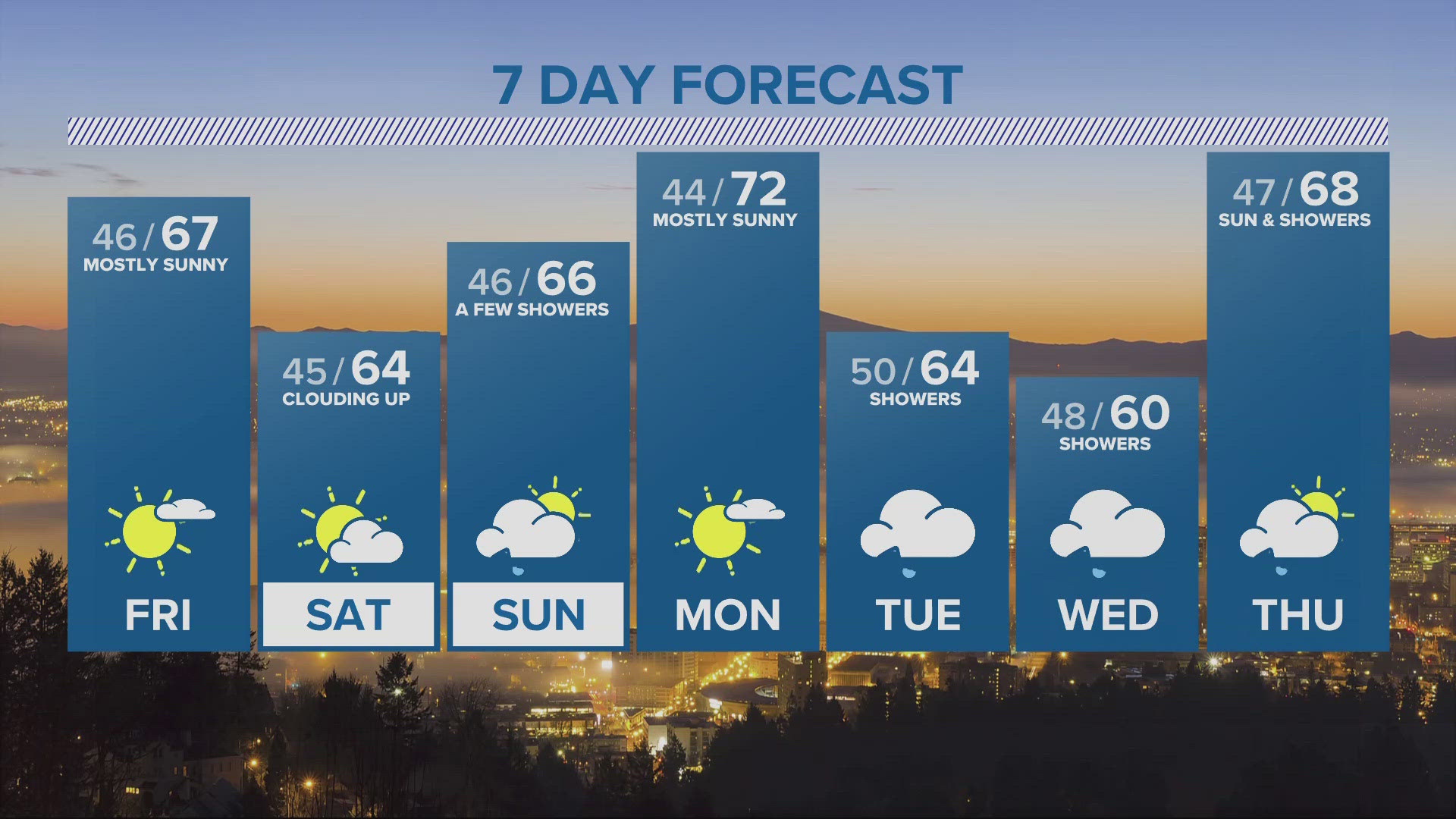PORTLAND, Ore — As we approach the Winter Solstice, there are several cool things to see and consider as we head toward the new season.
The biggie right now is the Great Conjunction. Also called the Christmas Star. Even though it’s not a star and happens four days before Christmas.
It’s actually two planets. The biggest and most distant in our solar system that are visible from earth. I’m talking about Jupiter and Saturn and an alignment of planetary geometry between those giant gas planets and the green and blue marble called Earth. Every 20 years the three are basically in a line, so from here on Planet Earth, the other two look to be really close together. But this year the Great Conjunction is Greater than usual. In fact, it hasn't been this great since the year 1623, and it hasn’t been this great AND visible from earth since 1226. So about 800 years.
Here’s why:
The space between Jupiter and Saturn will be only .1 degrees. That’s about the width of a dime at arms length from your eyeballs. Most Great Conjunctions are not that great, usually they’re about 1 degree apart. So this Great Conjunction is about 10 times greater and cooler than most. Below is a close up image from Rice University. If you have a telescope you can see the moons of the two gas giants.
Here’s where and when to look:
Southwest sky, right after sunset, on December 21. That’s when the two planets will be so close they appear as one big bright spot. Historians believe this is what guided the Three Wisemen to Jerusalem, hence the name Christmas Star.
For Conjunction coveters in the Pacific Northwest, Mother Nature is not cooperating. For a clear sky, you may need to travel as far east as Boise or as far south as northern California. We’ve got a cold front coming in Monday that will bring a lot of cloud cover. There’s a slight chance, if the front moves through fast enough, there may be some clearing west of the Cascades and even at the Oregon Coast. But I wouldn’t count on it. If the Great Conjunction converges with a clearing cloud deck in the Pacific Northwest, it would be something like a Solstice Miracle. Hey is that a thing? Here’s to hoping it becomes a thing.
Another reason to hope, pray, or dance around the Tannenbaum for a clear sky on Solstice is to be able to catch a glimpse of the Ursid Meteor Shower. This isn’t the best meteor shower of the year, that happened with the Geminids on December 13 and 14. But IF you have a clear sky, look to the north around 10 pm for streaks of meteoric light as Earth passes through the dusty slipstream of Comet 8P-Tuttle.
Lastly, I want to talk a little bit about… THE EQUATION OF TIME.
Sounds big and complicated, right? Don’t worry, we’re not going to go through the math, but the equation of time describes and explains why the winter solstice is NOT the shortest day of the year. If you look at chart of sunrise and sunset times, and yes, I do that kind of thing, you’ll notice that for mid-latitudes, sunset times are already getting later. Sunrise times are still getting later too. The reason is a little complicated, but it comes down to three things. First, the time it takes the earth to make one revolution is a little less than 24 hours. When it comes to determining the length of the day on our planet, that fact is usually overwhelmed by the distance the earth moves in orbit around the sun in 24 hours. But not around the solstices. At these two times of the year, Earth is near it’s closest (January) and farthest (July) points from the sun. We’re basically rounding the curvy part in our elliptical orbit of the sun. So at these points, the less than 24 hours of earth rotation dominates the change in distance we’ve traveled from the sun, which is marginal right now.
Phew… the equation of time. Oh, the other factor is earth’s own atmosphere, which refracts light and changes the time of true sunrise and sunset.
ANYWAY… the solstice is still a a great time to celebrate the lengthening of days, especially as we head out of the darkness of 2020.



